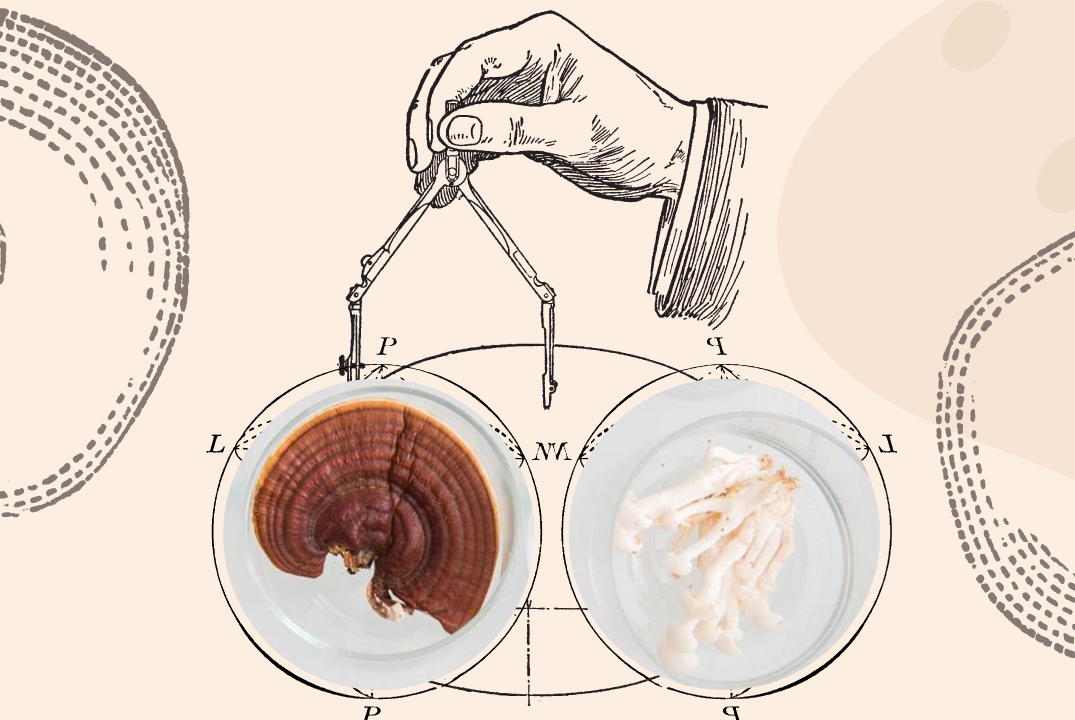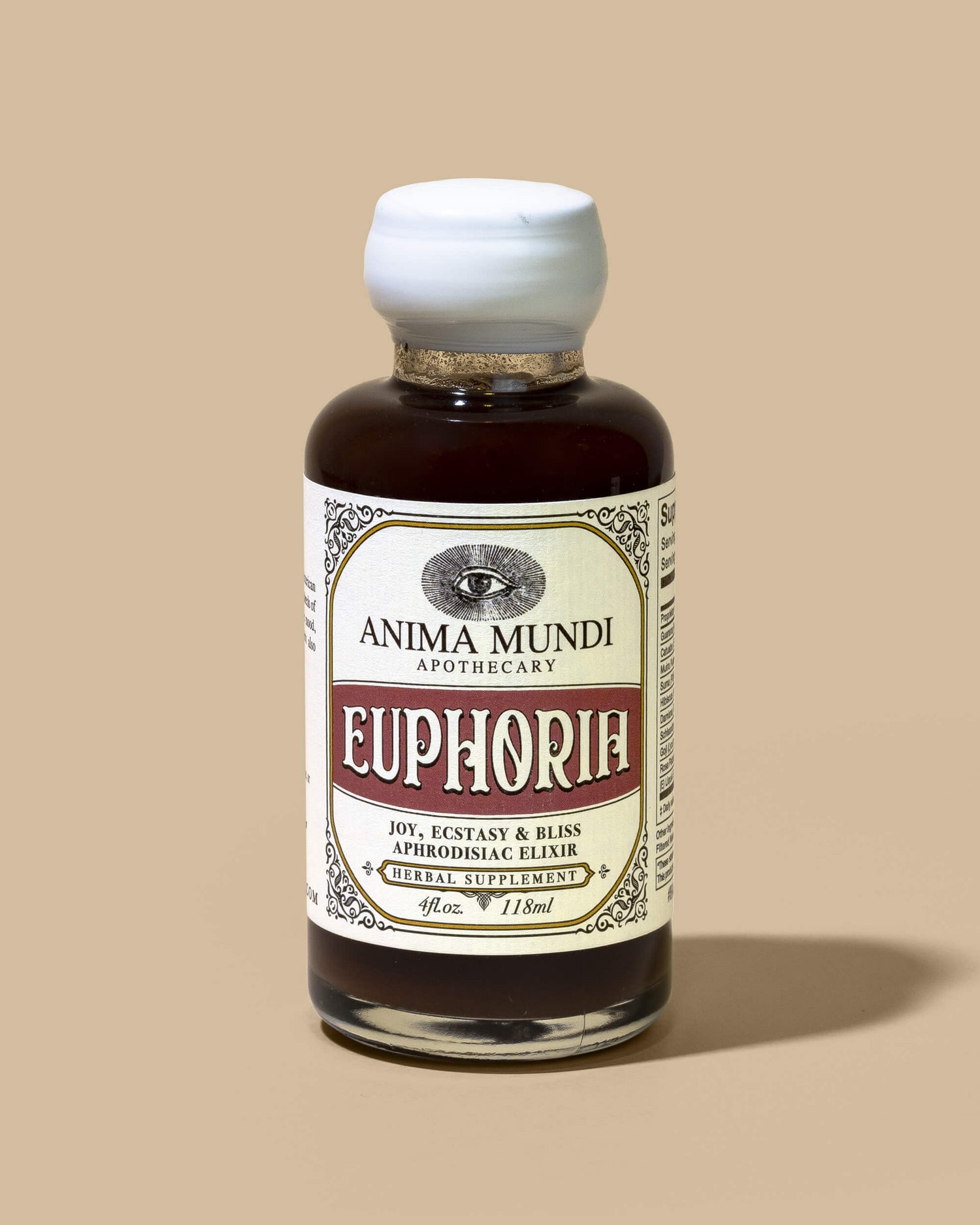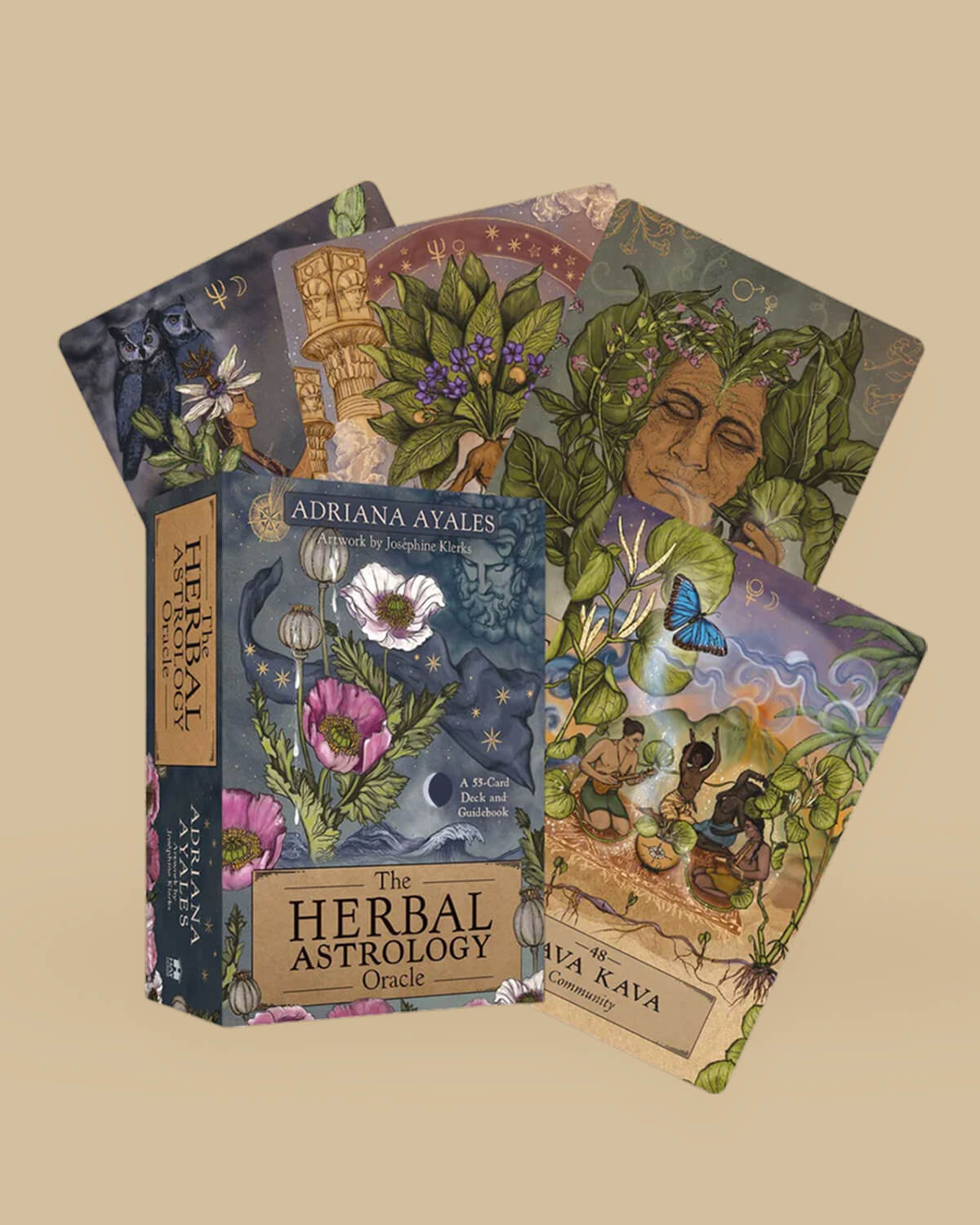The wellness world is finally catching on that medicinal mushrooms are truly magical. We’re not just talking about the psychedelic varieties of fungi experiencing a recent resurgence, thanks to increased media exposure and the rise of microdosing. This week, we’re tackling a new trend—“mushroom stacking”—which is actually a resurgence of ancestral wisdom repackaged in an accessible way for a larger, more modern audience.
“The growth of functional mushrooms shows no signs of slowing down,” says nutritionist Clarissa Berry. “Mushroom stacking is one of the latest buzzwords, referring to combining medicinal mushrooms with other adaptogens and antioxidants (stacking) to enhance the benefits. This trend explores the stacks which work particularly well together and why.”
According to an article by Heather Zwickey, PhD, and Paul Stamets, DSc in Integrative Medicine:
Our ancestors have used mushrooms as medicine for thousands of years. The Greek physician Hippocrates, circa 450 bce, classified the amadou mushroom (Fomes fomentarius) as a potent anti-inflammatory and for cauterizing wounds.
The Mushroom Council reports that mushrooms are currently the second-highest selling food in the United States, further indication of the long history of mushrooms as medicine, food, and healing agents continuing into the present day as essential cultural, naturopathic, and culinary staples. Further, in a survey by the Mushroom Growers of North America, it was revealed that over 90 percent of U.S. households consume mushrooms regularly. Even with the near ubiquity of fungi across American dinner tables, many remain unaware of the many transformative health benefits mushrooms (and specifically adaptogens) possess.
And according to The Guardian, the market for mushrooms in the United States is projected to grow by 50 percent in the coming years. “Chinese medical texts dating back to as early as 206BC describe reishi as a tonic against ageing,” reports The Guardian. “Widespread use of medicinal mushrooms continues in Asia today, with more than 100 varieties used just to treat cancer.”
Nicknamed the “mushroom man”, mycologist Paul Stamets also says mushrooms’ many helpful nutrients include: “beta glucans for immune enhancement, ergothioneine for antioxidative potentiation, nerve growth stimulators for helping brain function, and antimicrobial compounds for limiting viruses.” When exposed to UV light, the ergosterol contained in mushrooms is transformed into vitamin D. Additionally, they serve as an important source of potassium, phosphorus, and B vitamins. Their anti-cancer, anti-inflammatory, and antioxidant properties have been widely praised and tested in numerous scientific studies.
Believed to have been coined by Paul Stamets himself (perhaps best known for the Netflix series Fantastic Fungi), mushroom stacking refers to the enhanced benefits to be gained from combining antioxidants, adaptogens, and medicinal mushrooms to increase overall health outcomes. Experts say that those already familiar with different mushroom varieties can stack multiple types (see more in our herbalists’ guide below), and even “stack” with common kitchen ingredients. Long before the famous “Stamets Stack” came into the mainstream, the Aztecs combined liquid cacao and psilocybin mushrooms for added benefits.
The Stamets Stack
Because psychedelic mushrooms aren’t suitable for everyone, legality is murky at best in some places and not nearly accessible to all just yet, and its contraindications are numerous, our exploration of mushroom stacking today is focused on the practical use of this concept as it applies to implementing functional mushrooms and other plant allies in your healthcare routines without the hallucinogenic properties. But, we would be remiss not to acknowledge the Stamets Stack. According to the Microdosing Institute, Stamets' go-to stack includes the mushroom Lion's Mane, niacin (vitamin B3), and the mushroom compound psilocybin.
Designed to enhance cognitive function, the Stamets Stack is said to follow nootropic and microdosing protocols to theoretically help the mind break free of stagnant patterns, potentially opening the possibilities for new, adaptive thoughts and consciousness. Over the last several years, the particulars of the Stamets Stack have evolved and been adjusted as new research emerges, but the overall “entourage effect” it produces is believed to be similar in many ways to the way the compounds in cannabis interact.
“Understanding the role of mushrooms and their mycelia in ecosystems empowers their use in naturopathic medicine in ways that bolster conventional medical practices,” writes Stamets.
The Science Behind Stacking
Certified nutritionist and registered herbalist Professor Gene Bruno writes, “Medicinal mushrooms are a rich source of naturally occurring polysaccharides, especially beta-glucans. It is these compounds which have been shown to directly stimulate immune reactions.” His short answer to whether there is real value in combining mushrooms together is a resounding “yes.” Bruno specifically highlights the synergistic immunostimulatory effect that occurs when reishi, shiitake, and maitake are combined. Citing a 2019 study, the nutraceutical science professor says that this particular triad of mushrooms stacked together can be highly potent immunostimulators, thanks in large part to their concentrated beta- and alpha-glucan content.
Additionally, studies have demonstrated mushrooms can be used as an adjunct therapy to support cancer and tumor treatments by reversing myelosuppression. According to the authors of the study, the emerging evidence indicates that this makes them “a promising adjunct therapy to optimize overall treatment outcomes” and that mushrooms “appear to increase the effects of chemotherapy”. As we mentioned previously, this is further supported by the long use of many mushroom varieties being used for cancer treatment throughout Asia. Interestingly, this study noted that the use of cordyceps in combined therapy led to the longest survival rates.
Adaptogens + Food Pairings
For a harmonized formulation and effective results from any herbal intake, it’s of vital importance to pair the right plant medicines. The science of formulation remains a key component to the success of both traditional systems of medicine and indigenous herbalism. It is important to note that a healthy lifestyle and dietary changes are essential to the effectiveness of adaptogens and any plant medicine being used for healing. It goes without saying that adaptogens alone will not make up for poor dietary habits, lack of sleep, lack of exercise, addiction to stress, and an emotional or spiritual depleted life. Modern day cultures live a very malnourished life within the pantry of plenty. It’s vital to choose the type of diet that works best with your constitution, paired with the right herbs for the current cycle you're in.
Some plants treat major symptoms while others enhance absorption, create an inflammatory response, increase circulation, assist the heart, protect the liver, improve quality of sleep, and more. There are unlimited possibilities. The goal is to seek out complementary herbs that enhance or synergize the effects of primary and secondary adaptogens along with the right base pairings. Look for complementary herbs that are generally considered safe, “tonifying”, balancing, and like adaptogens, offer protective chemistry against oxidative stress and chronic inflammation. To read more about general subjects that most of us seek in day-to-day health or common imbalances that arise within the seasons, including herb and food pairings to optimize your adaptogenic potions, keep reading on the blog here.
 Medicinal mushrooms have been used in traditional and folk medicines since before recorded history. You've probably heard of Ötzi, one of the oldest bodies found frozen in ice around 3300 BCE, which was discovered in an alpine glacier in 1991. He was carrying two different species of mushroom on him at the time. One was a tinder fungus capable of holding a warm coal to re-start a fire at a new location many hours later. The other was a medicinal birch polypore used to fight parasites and other infections.
Medicinal mushrooms have been used in traditional and folk medicines since before recorded history. You've probably heard of Ötzi, one of the oldest bodies found frozen in ice around 3300 BCE, which was discovered in an alpine glacier in 1991. He was carrying two different species of mushroom on him at the time. One was a tinder fungus capable of holding a warm coal to re-start a fire at a new location many hours later. The other was a medicinal birch polypore used to fight parasites and other infections.
We can see from Egyptian hieroglyphics that their society saw mushrooms as a plant of immortality. Mushrooms were typically only eaten by pharaohs and other nobles, and were given the name “sons of the gods” and depicted in artwork as being sent to earth on lightning bolts.
For those of you new to the word “adaptogen", in a nutshell, it means non-toxic plants that help the body adapt to multiple stressors, primarily protecting the mind and body from the damaging effects of stress, helping the body achieve homeostasis. Used for the prevention of relief and healing from countless illnesses, the macroscopic fungi commonly known as medicinal mushrooms are frequently found in powder or extract form. Perhaps that’s why so many people are calling mushroom stacking “the wellness trend of 2023” to watch.
It is important to recognize that Eastern medicine, and Traditional Chinese Medicine (TCM) in particular, has incorporated medicinal mushrooms into its treatment modalities for hundreds of years. Recent clinical evidence has been widely cited to further confirm the broadly revered historical and practical knowledge of indigenous health practitioners for the great benefits functional fungi can offer us. Ready to dive in even deeper? Check out our Quick Guide to 8 Adaptogenic Mushrooms here.
 Different adaptogenic mushrooms target different areas of the body, mind, and spirit. Stacking adaptogenic mushrooms can create a synergistic effect, amplifying the benefits of each mushroom. The right mushroom “stack” for you is about what health benefits you seek. Below, we’ve put together an easy-to-use guide with some of our favorite stacks. Check it out, and chat with one of our herbalists for free, Monday-Friday, to ask us your questions about functional mushrooms, adaptogens, and other herbal medicines in our apothecary.
Different adaptogenic mushrooms target different areas of the body, mind, and spirit. Stacking adaptogenic mushrooms can create a synergistic effect, amplifying the benefits of each mushroom. The right mushroom “stack” for you is about what health benefits you seek. Below, we’ve put together an easy-to-use guide with some of our favorite stacks. Check it out, and chat with one of our herbalists for free, Monday-Friday, to ask us your questions about functional mushrooms, adaptogens, and other herbal medicines in our apothecary.
IMMUNITY: Turkey Tail + Chaga
- Turkey Tail is known to help ward off infections.
- Chaga has been studied to strengthen the immune system, partly due to its high antioxidant qualities.
CALM: Chaga + Reishi
- Chaga is high in antioxidants, helping to decrease potential damage due to stress.
- Reishi is a shen tonic, meaning it soothes + nourishes the spirit.
ENERGY BOOST: Chaga + Cordyceps
- Chaga enhances uptake of glucose, maximizing energy pathways in the body.
- Cordyceps is thought to improve energy and the body's ability to use oxygen efficiently.
FOCUS + COGNITION: Lion's Mane + Reishi
- Lion’s Mane improves memory and focus, and removes feelings of anxiety and irritability.
- Reishi helps cognitive performance and reduces fatigue.
 BEAUTY: Tremella + Reishi
BEAUTY: Tremella + Reishi
- Tremella may help boost collagen and moisturize the skin.
- Reishi is known as the “fountain of youth”, in part because of its ability to help reduce fine lines and wrinkles.
GUT HEALTH: Turkey Tail + Lion’s Mane
- Turkey Tail functions as a prebiotic.
- Lion’s Mane may inhibit bad bacteria and combat inflammation in the gut.
RESPIRATORY HEALTH: Cordyceps + Reishi
- Cordyceps benefits + protects the lungs.
- Reishi improves oxygen utilization and strengthens the lungs
PHYSICAL + MENTAL WELL-BEING: Chaga + Lion’s Mane
- Chaga, also called the “king of mushrooms”, has one of the highest antioxidant levels of any food. Its many benefits include supporting healthy immune function, stress response, digestion, metabolic, heart and skin health.
- Lion’s Mane is a revered brain- and mood-boosting cognitive ally. Additionally, it can specifically aid memory, focus, productivity, and nerve cell growth.
- As with all of the above, using one mushroom at a time can also provide wonderful support for various aspects of our overall well-being. But in combination, you’re powerfully amplifying the holistic health outcomes for great potency and results for mind, body, and spirit.
To learn more about herbs for longevity and everyday wellness, adaptogenic herbs, and a list of complementary herbs that pair well with adaptogens, plus “master herbs” researched for their adaptogenic-like chemistry, get your beautifully illustrated copy of Adaptogens by Anima Mundi Herbals founder, Adriana Ayales, here.



















